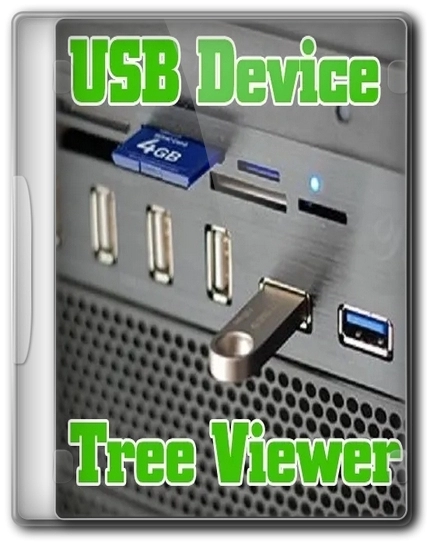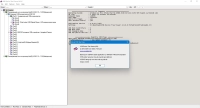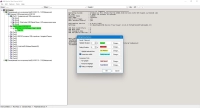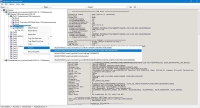If you’re struggling to find USB Device Tree Viewer 4.0.6.0 Portable, HaxNode offers a reliable solution. Known for its wide range of direct links, torrents, and pre-activated software, HaxNode ensures easy access to the programs you need without the usual hassle. Whether you’re a professional seeking industry-specific tools or an enthusiast looking to explore new utilities, HaxNode is your go-to resource for straightforward, secure software her!. You may also like USB Device Tree Viewer
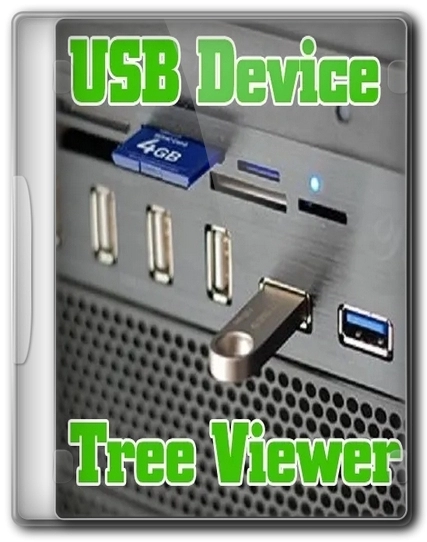
UsbTreeView is a small portable utility that provides greater visibility than a standard tool for presenting USB ports, hubs and devices, through a tree list and information field, with the ability to copy text by simply highlighting it. UsbTreeView is based on the USBView sample from the Windows Server 2003 driver kit, but has been added: better icons, the ability to update devices or the list without resetting the selection, displaying additional. information from the device manager, display of mount drive letter and COM ports, the ability to safely remove (Admin), choice of font and color for the right panel, there is a toolbar and jump lists for easy device search in complex trees. From the context menu you can restart the device or port, as well as safely remove the device (these actions require administrator rights), or call the standard properties dialog.
System requirements:
Windows XP / Vista / 7 / 8 / 8.1 / 10 / 11 (x86-x64)
Torrent USB Device Tree Viewer 4.0.6.0 Portable details:
Peculiarities:
– changes are updated asynchronously, the selected element is not reset
– shows additional information received from Windows Device Manager, including child devices
– extended information on the USB interface is available in Windows 8 (taken from the latest USBView)
– shows the drive letter, if any, and COM ports
– you can safely remove the device, restart and reboot the port (admin)
– custom font and color for the right panel
– toolbar and jump lists for easy device search in complex trees
– saving window position
– improved icons in treeview control list
Application:
USBTreeView [/ R: имя файла]
/R: filename write (silent) report to filename
About unknown handles
Decryptors cannot be decoded for two reasons.
appears as “Unknown”:
– decoding not implemented
– InterfaceClass of the device is 0xFF (depending on the manufacturer), so depends on the class
descriptors cannot be decoded because their class is unknown
So if you have an unknown handle and the interface class is not 0xFF
then please let me know, maybe I can find a suitable specification
and can add a transcript for it.
For some unknown reason, HID descriptors often cannot be read, Windows
returns ERROR_GEN_FAILURE or ERROR_INVALID_PARAMETER. As far as I know
it appears that it depends only on the device, but another user reported that
The hid descriptor of some devices can be read in NT6, but not in NT5.
About “Safe Delete” and “Reboot”
When securely uninstalling, UsbTreeView first calls the configuration management call
CM_Query_And_Remove_SubTree. If successful, a problem code appears on the device.
21, which is CM_PROB_WILL_BE_REMOVED. Device with code 21 can be reactivated
by calling the DIF_PROPERTYCHANGE class setter. What’s this
UsbTreeView does this if you select Reboot Device.
But CM_Query_And_Remove_SubTree requires administrator privileges, otherwise it will not work.
with CR_ACCESS_DENIED. In this case, CM_Request_Device_Eject is called
which works without admin rights but results in problem code 47 which
this is CM_PROB_HELD_FOR_EJECT. Such a device cannot be reactivated by itself.
Reactivation is possible by restarting the port or the entire hub that it
attached to. But the latter of course reboots all devices connected to
hub.
In all cases, UsbTreeView simply makes a system call and shows
message box if Windows returns an error. But Windows doesn’t always
return an error even if there was one, so sometimes nothing happens at all.
About “Restart Port”
This calls IOCTL_USB_HUB_CYCLE_PORT which simulates a shutdown and
reconnect the connected device.
It is available under XP, but usually only for hubs running
Microsoft default driver. Third party drivers are usually returned
ERROR_UNKNOWN_FUNCTION.
In Vista and Windows 7 it is no longer supported as a Windows standard.
drivers, it always fails with ERROR_NOT_SUPPORTED.
Since Windows 8 it works again, but unlike XP Administrator it takes over
necessary. Without administrator rights it does not work, like in Vista and Win7
with ERROR_NOT_SUPPORTED.
About Debug-Port
The Microsoft USBView sample has a list of USB host controllers.
and their debug port. I put the table in UsbTreeView, it shows
then in the properties of the host controller a line like this:
DebugPort (from list): 1
Windows 8 has extended USB information, it tells you for each port if it is
supports debugging and it actually works (seen on i945G chipset with ICH7).
USB mice
If the USB mouse moves when the tool prompts for its USB properties
is usually a mistake because the mouse has more important things to do
do. UsbTreeView then tries to obtain this information for a few seconds.
You can see a yellow question mark in the mouse tree node for
a moment that disappears as soon as you stop moving the mouse.
This retry mechanism applies to all types of devices, but is typically
mouse is where it helps.
Information displayed as a tree
UsbTreeView is optimized for speed so USB descriptors are not
are collected before the device is selected in the tree structure. So, information
which come from USB descriptors cannot be shown in the tree structure,
everything comes from the Windows Device Manager.
For the same reason, creating a full report takes some time.
Details about the program:
The USB Device Tree Viewer, abbreviated as UsbTreeView, is based on the Microsoft “USBView” sample application found in the Windows Driver Development Kits and now standalone on GitHub.
But this is only the source code, the executable file is not provided to end users. Meanwhile, USBView comes as executables as part of Debugging Tools for Windows.
UsbTreeView started with the USBView source code from the Server 2003 DDK.
Here are the improvements I made:
Information from Windows Device Management is collected and correlated with detected USB devices; Therefore, UsbTreeView can display child devices including drive letters and COM ports.
Window position is saved
You can set the background color and font of the right panel (the font shown in the screenshots is DOSLike 7)
Preserves tree item selection when refreshing
TreeView highlighting arrived and deleted devices
Shows open handles when secure deletion fails
Many more descriptors are decrypted than Audio 2.0
Can show Hexdump of descriptors
Safe removal, device restart and port restart
Enhanced USB information available in Windows 8 and 10 (taken from the latest USBView sample app)
Expanded information about host controllers
Failed USB requests are repeated in the background, for example if the USB mouse was moved while its properties were being queried.
Toolbar with jump lists for quickly finding devices in complex trees
TreeView with manual 16×16 icons, USBView used 32×32 icons scaled down to 15×15
many small improvements
Since V3.0
No more need to list all devices upon arrival and removal of the USB device.
Search function (not full text, just things like device ID, drive letter, volume name, etc.)
Some new keyboard shortcuts (Alt + D to open drive list, Alt + O to list others, Alt + S to focus search editing, Alt + Left/Right to switch between search hits
Options to not expand empty hubs or a hub only with attached empty hubs
Arrivals and Departures Transition Options
Ability to expand tree elements to make selected arriving and departing devices visible
Ability to rename tree elements (press F2 or click on it once when selected)
Uses the Windows visual theme with the ability to disable it
With V3.3
Can write and read report in XML format (not compatible with USBview)
From V3.5
You can copy a full-size tree view screenshot to the Windows clipboard.
From V3.7
The USB Device Tree node may use better names than the (often generic) names from Device Manager.
From V3.8
Context menu item “Regedit…” to open specific registry keys for specific devices in the Windows Registry Editor.
History of changes
About the portable version:
Provided by the developer, does not require installation. It saves all settings and log files next to itself.
Download USB Device Tree Viewer 4.0.6.0 Portable via torrent:
Special Note
⚠️ Important: Do not use cracked software! Choose authentic versions for safety. Our software is for educational purposes, gathered online. Download responsibly. Regards, HaxNode 🛡️

